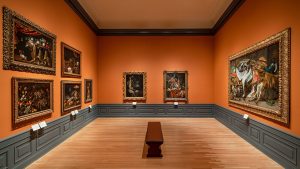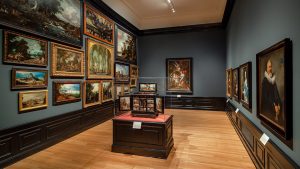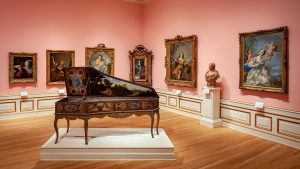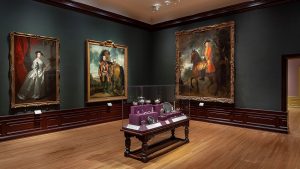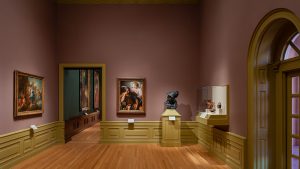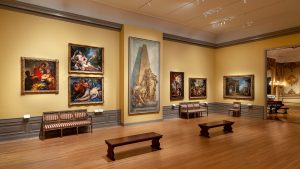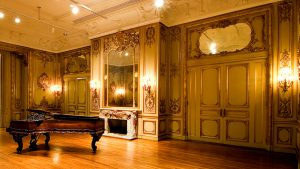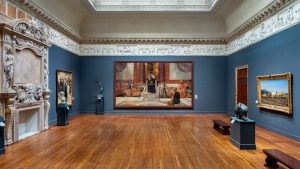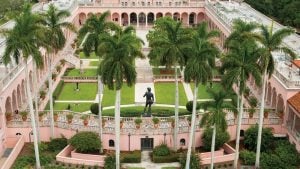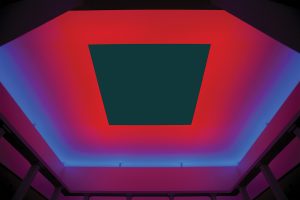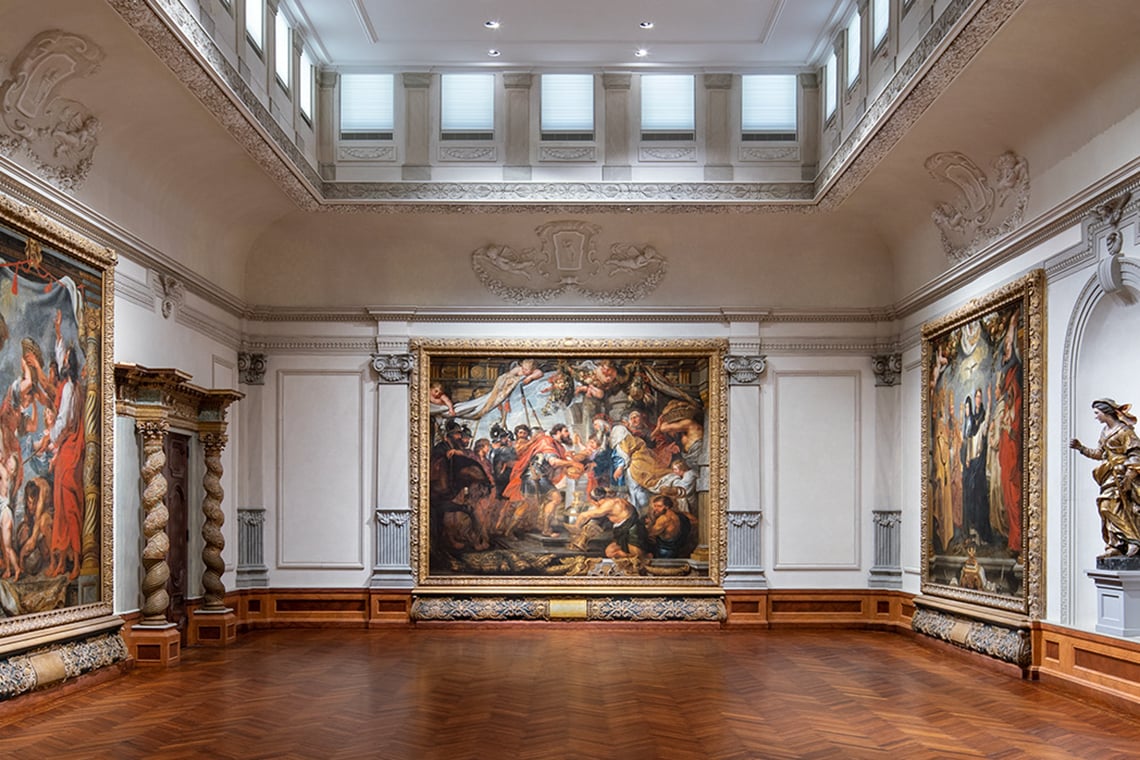
Original 21 Galleries
John and Mable Ringling’s vision to create a world-class art museum was realized with the creation of the Museum of Art’s original 21 galleries. These galleries opened permanently to the public in 1932 as The John and Mable Ringling Museum of Art and have been wowing visitors ever since with a stunning array of European art from the medieval period to the 19th century.
 Galleries 1 and 2
Galleries 1 and 2
Immerse yourself in the breathtaking majesty of Galleries 1 and 2, which feature a spectacular selection of larger-than-life paintings by the Flemish master Peter Paul Rubens. The five immense paintings, part of Rubens’s Triumph of the Eucharist series, were created for an elite royal audience–but today they are enjoyed by visitors from all over the world.
 Gallery 3
Gallery 3
Gallery 3 offers a robust selection of Late Gothic and Renaissance works from Northern Europe, including paintings by Lucas Cranach the Elder, Cornelis van Cleve, and Quinten Metsys. The sculpture, furniture, and decorative arts in this gallery provide a comprehensive context for further understanding this period of art history.
 Gallery 4
Gallery 4
Some of the museum’s most beautiful Italian Renaissance paintings can be found in Gallery 4. From the sweetly serene (Bernadino Luini’s Virgin and Child with Saints Sebastian and Roch) to the intriguingly enigmatic (Piero di Cosimo’s Building of a Palace), this gallery shows off a wide range of Italian Renaissance style.
 Gallery 5
Gallery 5
Gallery 5 brings the Renaissance domestic sphere to life, featuring a lettuccio (a 16th-century Italian daybed) and images used for religious devotion at home. Revel in the delicate Della Robbia terracotta Madonna and Child and Domenico Ghirlandaio’s tender rendition of the Virgin and Child with the Young John the Baptist and Three Angels.
 Gallery 6
Gallery 6
Gallery 6, devoted to 16th-century Italian painting, includes a visitor favorite: Paolo Veronese’s large altarpiece Rest on the Flight to Egypt. Other can’t-miss works in this gallery include Antonio Palma’s dramatic Esther before Ahasuerus and Giovanni Antonio Fasolo’s Family Group portrait.
 Gallery 7
Gallery 7
Gallery 7 moves us into the seventeenth century, with two spectacular paintings by Nicolas Poussin, one of the leading figures in the classical Baroque. Additional highlights include two allegorical paintings: one by Simon Vouet depicting a romantic entanglement between Venus and Mars, and a handsome Allegory of Study by Salvator Rosa.
 Gallery 8
Gallery 8
Those in search of drama, intrigue, and great stories need look no further than Gallery 8. Celebrating the dramatic style of the Italian Baroque, the works on view in this gallery, including paintings by Fede Galizia, Guercino, and Benedetto Gennari II, use dynamic compositions, light and shadow, and emotional intensity to engage visitors.
 Gallery 9
Gallery 9
The small but mighty Gallery 9 includes the long-time visitor favorite affectionally known as the Blue Madonna (Mater Dolorosa by Onorio Marinari). Other highlights include Pietro da Cortona’s Hagar and the Angel and Carlo Dolci’s delicate oil on copper rendition of John the Evangelist.
 Gallery 10
Gallery 10
Another celebration of the Baroque, Gallery 10 displays a range of paintings depicting the mythological (Giuseppe Ghezzi’s Judgment of Paris and Juan Bautista Maino’s Narcissus) and the biblical (Nicolas Tournier’s Tobias Taking Leave of His Parents).
Gallery 11
Want to see a selection of some of the museum’s favorite paintings all in one place? Gallery 11 hosts some of the greatest hits of the collection—including three works by Peter Paul Rubens and a portrait by Diego Velazquez—gathered in one convenient location for visitors to enjoy.
 Gallery 12
Gallery 12
This flexible gallery space connects the historic museum galleries to the Keith D. Monda Gallery of Contemporary Art. Currently used for special projects or featured exhibitions, be sure to stop by Gallery 12 to see what’s going on at the time of your visit!
 Gallery 13
Gallery 13
Despite the name, “still life” paintings burst forth with color, form, and texture. Gallery 13’s works demonstrate the vitality of the genre, from Jan Davidsz de Heem’s resplendent Still Life with Parrots to the monumental Still Life with Dead Game from the circle of Frans Snyders.
 Gallery 14
Gallery 14
Step back in time to the seventeenth-century Netherlands! Many of the paintings in this space have been installed to evoke a Dutch “collector’s cabinet.” A celebration of the Dutch Golden Age, this gallery also showcases one of Frans Hals’s most striking portraits and a stunning depiction of Hagar and Ishmael in the Wilderness by Karel Dujardin.
 Gallery 15
Gallery 15
Frivolity and fun rule the day in Gallery 15, dedicated to the French Rococo period of the early 1700s. The art made during this time reflects the carefree aristocratic lifestyles of the elite, represented here in fanciful portraiture and a beautifully-decorated harpsichord that’s almost 400 years old.
 Gallery 16
Gallery 16
Visitors to Gallery 16 will experience a distinguished display of eighteenth-century British art. Get lost in the dreamy Moonlight Landscape by Joseph Wright of Derby or size yourself up against the two colossal portraits of British military commanders by Joshua Reynolds and Thomas Gainsborough.
 Gallery 17
Gallery 17
Learn about Neoclassicism in Gallery 17 by studying works from its most illustrious artists, including Angelica Kauffmann, Benjamin West, and Anton Raphael Mengs. This gallery also includes examples of ancient sculpture, from which the Neoclassical movement drew inspiration.
 Gallery 18
Gallery 18
Transport yourself to an eighteenth-century Grand Tour in Italy through the paintings and furniture on display in Gallery 18. Enjoy the bustling scene of daily life in Turin depicted in Giovanni Michele Graneri’s 1756 painting of a lottery drawing, or contemplate the esoteric message behind Giovanni Battista Tiepolo’s lofty fresco Two Allegorical Figures.
 Gallery 19/Gallery 20
Gallery 19/Gallery 20
These illustrious rooms feature two extremely rare surviving examples of intact Gilded Age room decoration: the Salon (Gallery 19) and Library (Gallery 20) from the Astor Mansion in New York City, built by prominent socialite Caroline Schermerhorn Astor and her son John Jacob Astor IV. When the home was demolished in 1926, John Ringling bought the interiors and shipped them to Sarasota to be fitted into his new museum.
Gallery 21
Gallery 21, which focuses on John Ringling’s taste for art from the late nineteenth century, dazzles with its grand scale and incorporated architectural sculpture. The massive Emperor Justinian by Jean-Joseph Benjamin-Constant reigns supreme, but other masterworks hold their own, including two animal paintings by the renowned French artist Rosa Bonheur and a bust by American sculptor Augustus Saint-Gaudens.
 Museum of Art Courtyard
Museum of Art Courtyard
The 21 original galleries of the Museum of Art form a U-shape that surrounds an outdoor courtyard garden replete with a covered marble loggia, water features, and bronze and stone sculptures. The most iconic sculpture is undoubtedly the bronze replica of Michelangelo’s David, given a place of prominence overlooking the splendor of the museum’s historic Italianate architecture.
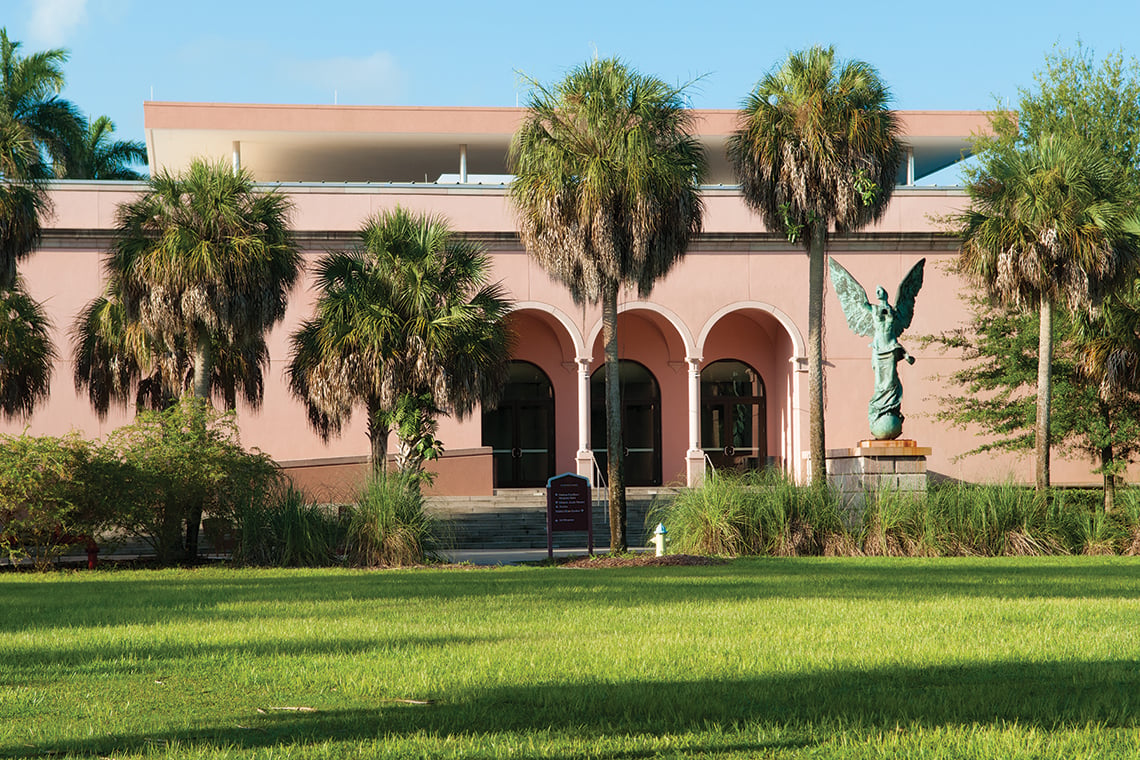
Ulla R. and Arthur F. Searing Wing
The Ulla R. and Arthur F. Searing Wing houses rotating special exhibitions, including those originated by The Ringling and those traveling from other museum venues. The Searing Wing was added to the north wing of the museum in 2007, providing more than 20,000 square feet of gallery space. Joseph’s Coat: A Skyspace by James Turrell was installed in 2011 in the William G. and Marie Selby Courtyard, marking a significant addition to The Ringling’s modern and contemporary art program.
Joseph’s Coat: A Skyspace by James Turrell (2011) is a triumph of technology, engineering, and aesthetics. The Skyspace, created by internationally renowned artist James Turrell, is a gathering place for contemplation and offers a unique experience.
At sunset, a sophisticated system of LED lights is employed to change the color of the space. In doing so, the artist changes the context in which we view the sky through the 24-foot aperture in the ceiling, affecting our perception of the natural environment and the built surroundings.
Joseph’s Coat: A Skyspace by James Turrell is made possible through the support of Peter A. Vogt Family, Robert and Beverly Koski, and Dick and Betty Watt Nimtz, with special acknowledgment to the William G. and Marie Selby Foundation and to Ulla R. and Arthur F. Searing.
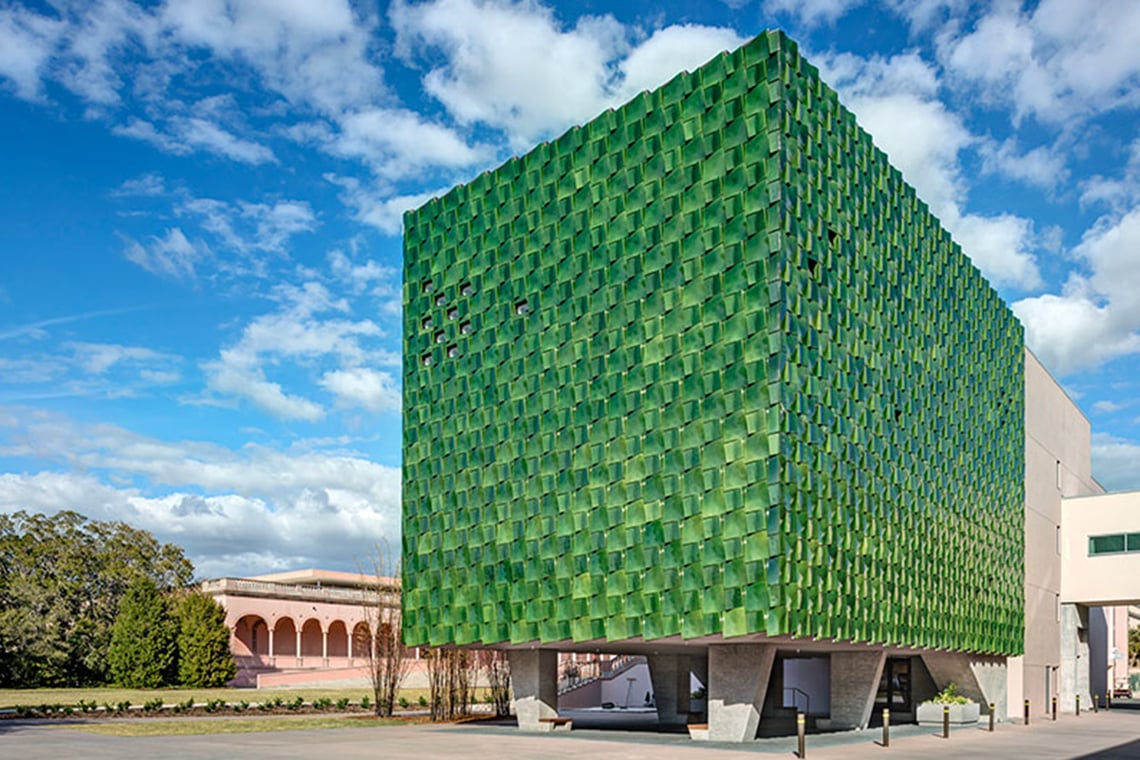
Ting Tsung and Wei Fong Chao Center for Asian Art
The Chao Center for Asian Art, comprising three main gallery spaces, presents over 3000 years of history and culture from across the Asian continent. The Ting Tsung and Wei Fong Chao Gallery features highlights from The Ringling’s extensive collection of Chinese ceramics, South and Central Asian sculpture, as well as objects from Japan, Korea, and countries in Southeast Asia. The Galleria displays works of art that reflect the cultural exchanges that occurred between and within East and West in the ages of the Silk Roads and maritime trade. The Pavilion Gallery is a space for rotating exhibitions of light-sensitive material and objects on loan from private collections and other museums.
In addition to the gallery spaces, the Chao Center for Asian Art also contains the 125-seat Ting Tsung and Wei Fong Chao Foundation Lecture Hall, the Charles and Robyn Citrin Study Room for close examination of objects and prints, the Denton Family Reading Room, and open storage spaces that facilitate public access to the collections.
As a complement to the Chao Center for Asian Art, The Nancy L. and George R. Ellis Tea House was built on the grounds nearby to host traditional tea ceremonies and serve as an educational space.
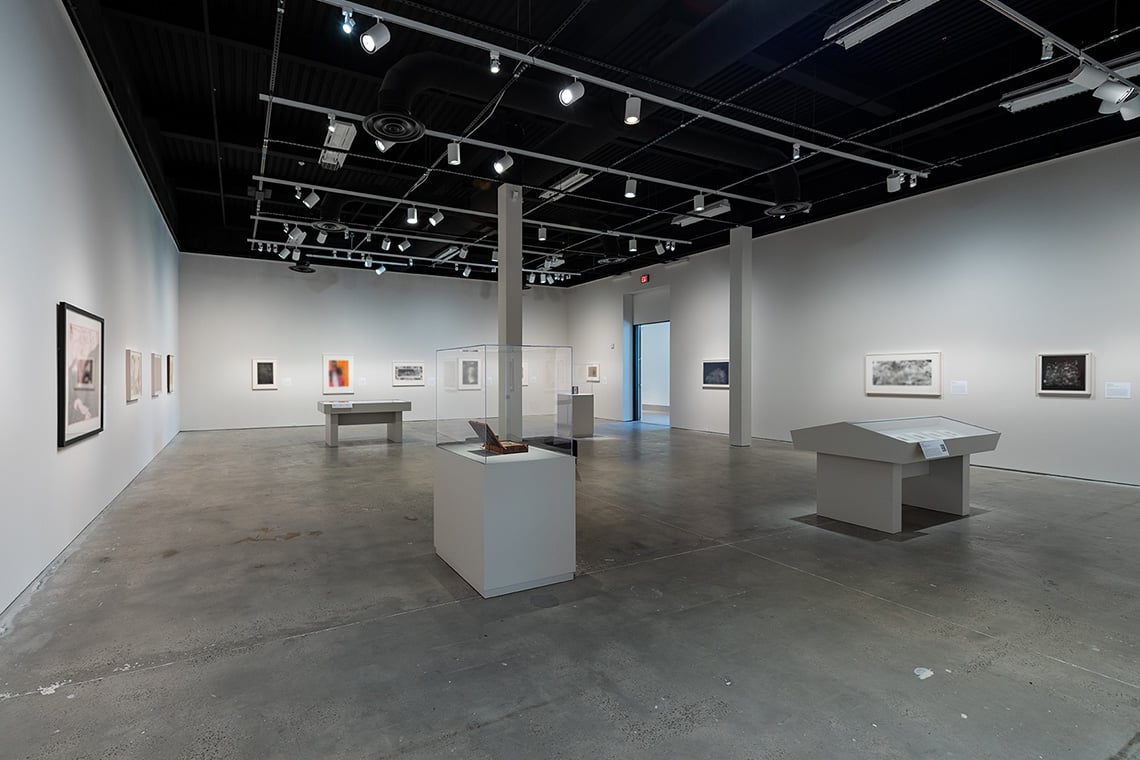
Keith D. Monda Gallery for Contemporary Art
This gallery is a flexible space that showcases the work of living artists, particularly those who work innovatively in non-traditional modes such as video, new media, installation, or performance. It provides a venue for artists grappling with some of the most complex and provocative issues of our time.
The 2,400-square-foot Monda Gallery for Contemporary Art opened in 2016 thanks to the generosity of Sarasota philanthropist Keith D. Monda. Its opening marked the first time a gallery space at the museum was permanently devoted to modern and contemporary art.
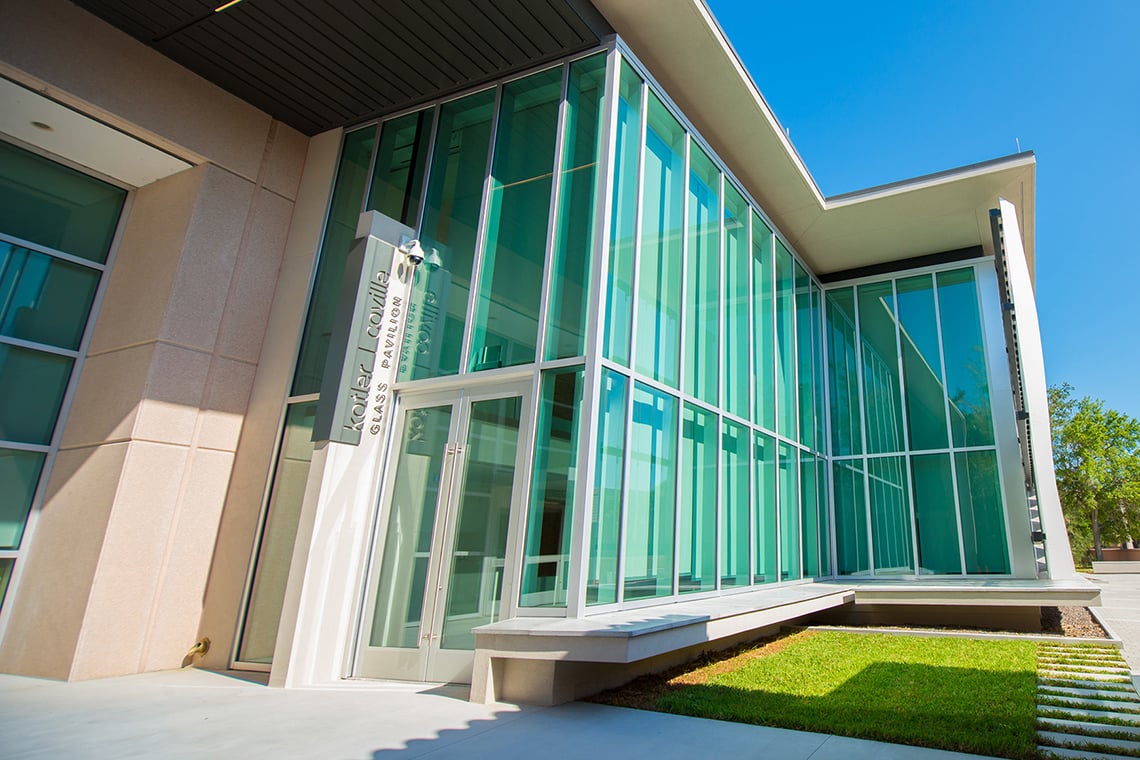
Kotler-Coville Glass Pavilion
The Kotler-Coville Glass Pavilion showcases The Ringling’s growing collection of vibrant studio glass. Featuring an ongoing rotation of exhibitions, the space allows visitors to learn more about a range of dynamic glass techniques from the work of innovative modern and contemporary glass artists.
Free and open to the public, this 5,500-square-foot space, made possible by the generosity of Nancy and Phil Kotler and Warren and Margot Coville, also serves as an entry point for visitors to the Historic Asolo Theatre. The Kotler-Coville Glass Pavilion’s sculptural glass façade and innovative design became the most recent landmark work of architecture on The Ringling campus after its opening in 2018.
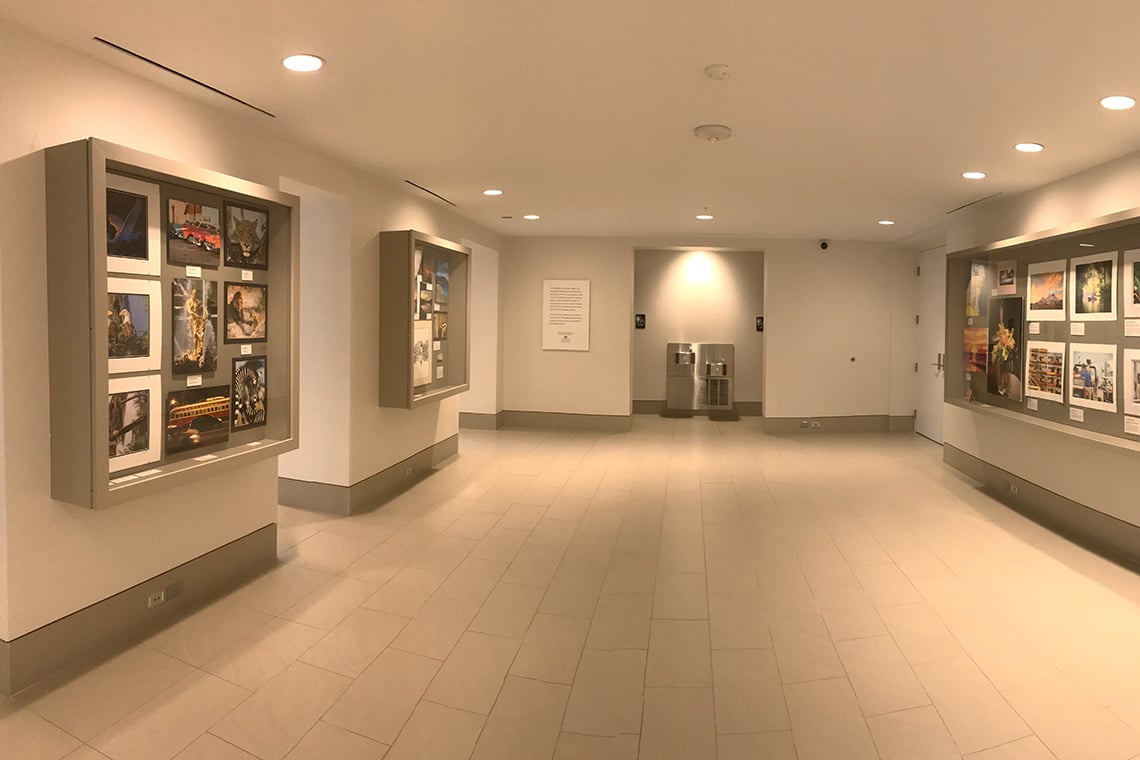
Community Gallery
The Ringling’s Community Gallery is a public exhibition space dedicated to displaying works of art produced by community-based, non-profit, or student groups in the local area. Its purpose is to make The Ringling more inclusive and accessible to all. Located on the ground floor of the Chao Center for Asian Art, the Community Gallery is always free and open to the public. Funding for the Community Gallery is generously provided by the Community Foundation of Sarasota County.
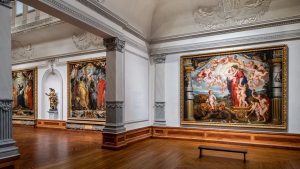
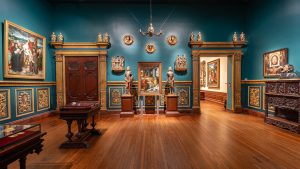 Gallery 3
Gallery 3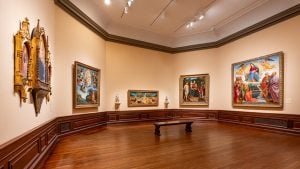 Gallery 4
Gallery 4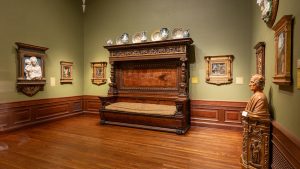 Gallery 5
Gallery 5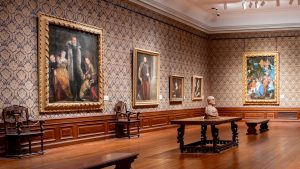 Gallery 6
Gallery 6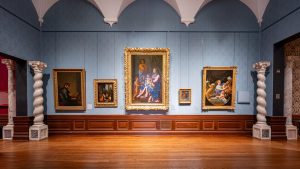 Gallery 7
Gallery 7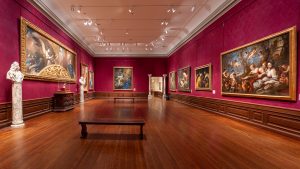 Gallery 8
Gallery 8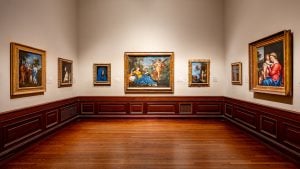 Gallery 9
Gallery 9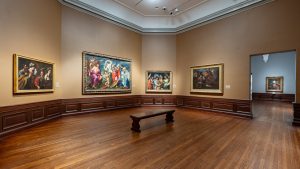 Gallery 10
Gallery 10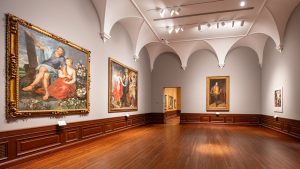
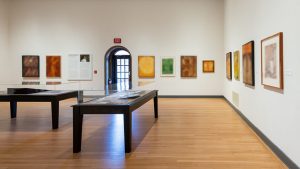 Gallery 12
Gallery 12